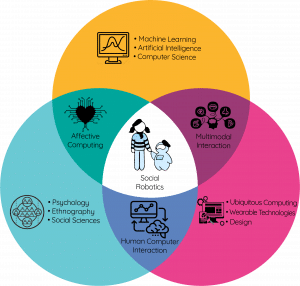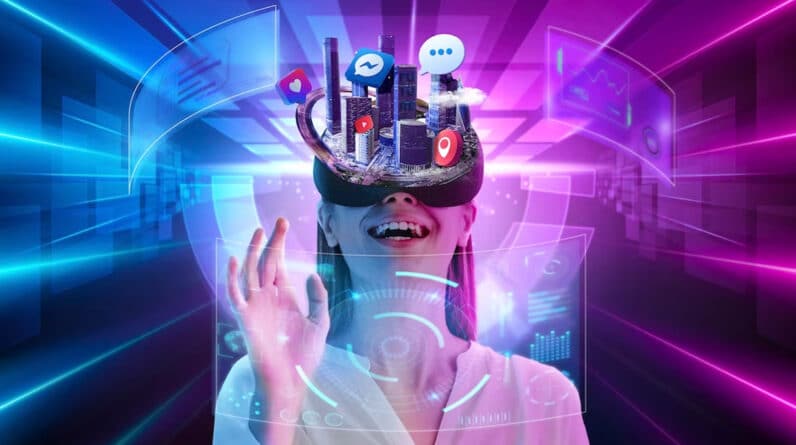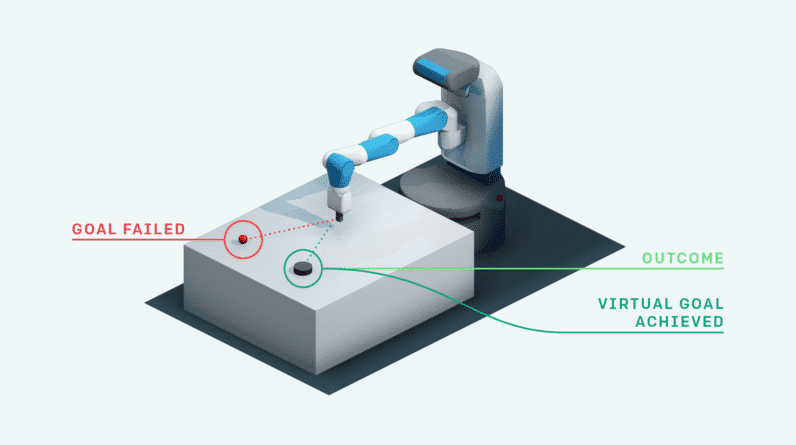In the ever-evolving age of technology, the notion of machines being capable of understanding and even mimicking human emotions may seem like something out of a science fiction novel. However, with the emergence of Emotion AI, this concept is becoming increasingly possible. Emotion AI, short for Emotion Artificial Intelligence, is a revolutionary field that seeks to develop technology that can comprehend and respond to human emotions in a natural and empathetic manner. With potential applications ranging from virtual personal assistants to mental health support, Emotion AI has the power to revolutionize the way we interact with technology and pave the way for a more emotionally intelligent future.

What is Emotion AI?
Definition
Emotion AI, also known as affective computing, refers to the field of study and development of artificial intelligence systems and technologies that are capable of understanding, interpreting, and responding to human emotions. It aims to bridge the gap between human emotions and machines, enabling technology to recognize and empathize with human feelings.
Objectives
The main objectives of Emotion AI are to improve human-computer interaction, enhance user experience, provide better mental health support, and enable personalized recommendations. By accurately recognizing and understanding human emotions, AI systems can adapt their responses and actions accordingly, creating more meaningful and tailored experiences for individuals.
How Does Emotion AI Work?
Data Collection
Emotion AI relies on various methods to collect data and analyze human emotions. One of the primary sources of data collection is through facial expression analysis, where computer vision algorithms analyze the facial features and expressions of individuals to identify emotions such as happiness, sadness, anger, and surprise. Voice analysis is another technique used to capture vocal cues, tone, and speech patterns to understand emotions expressed through speech. Text analysis involves analyzing text-based inputs, such as written messages or social media posts, to detect emotions in written content.
Facial Expression Analysis
Facial expression analysis plays a crucial role in Emotion AI. By utilizing machine learning algorithms and computer vision techniques, AI systems can detect and analyze facial expressions, microexpressions, and movements to identify and interpret emotions accurately. This technology has found applications in various domains, including virtual assistants, marketing research, and mental health.
Voice Analysis
Just like facial expressions, voice analysis is another essential aspect of Emotion AI. By analyzing vocal cues, intonation, and other speech-related features, AI systems can identify emotions expressed through speech. Voice analysis technology has been applied in applications such as call centers, where it can help in real-time emotion detection to improve customer service and support.
Text Analysis
With the increasing use of digital communication, text analysis has become vital in analyzing and understanding human emotions. By employing natural language processing (NLP) techniques, AI systems can scan text messages, emails, social media posts, and other written forms of communication to identify emotional patterns and sentiments. This application is particularly useful for sentiment analysis, brand monitoring, and market research.
Biometric Sensors
Another method used in Emotion AI is the utilization of biometric sensors to capture physiological signals associated with emotions. Sensors such as heart rate monitors, galvanic skin response sensors, and electroencephalogram (EEG) devices can track changes in physiological responses, providing additional data to analyze an individual’s emotional state. These sensors find applications in areas like mental health diagnosis and human-computer interaction.
Machine Learning Algorithms
Machine learning algorithms and deep neural networks play a crucial role in Emotion AI. These algorithms are trained on large datasets of emotions to recognize patterns and learn to associate specific emotional cues with corresponding emotions. By continuously improving and refining their models, AI systems can enhance their accuracy in emotion recognition, leading to more precise responses and actions.

Applications of Emotion AI
Virtual Assistants
Virtual assistants, like Apple’s Siri or Amazon’s Alexa, have become increasingly popular. Emotion AI can enhance virtual assistants by enabling them to understand emotions expressed by users and respond accordingly. For example, a virtual assistant can recognize frustration in a user’s voice and adjust its responses to provide more patient and understanding assistance.
Human-Computer Interaction
Emotion AI has significant implications for human-computer interaction. By understanding and responding to human emotions, AI systems can create more engaging and personalized experiences. For example, interactive games can adapt their difficulty level based on the user’s emotions, providing a more challenging or relaxing experience as needed.
Market Research
Emotion AI plays a crucial role in market research by providing insights into consumer emotions and preferences. By analyzing facial expressions, voice tones, and text responses, AI systems can gauge consumer reactions to products, advertisements, or user experiences. This information helps companies to develop products and marketing strategies that resonate with their target audience on an emotional level.
Mental Health
Emotion AI has great potential in the field of mental health. By analyzing emotional cues and physiological signals, AI systems can assist in the detection and monitoring of mental health conditions such as depression, anxiety, and stress. Emotion AI-based applications can provide personalized support, such as virtual mental health assistants or mood tracking applications, to help individuals manage their mental well-being.
Education
Emotion AI can revolutionize education by enabling personalized learning experiences. By recognizing student emotions and engagement levels, AI systems can adapt teaching styles and content delivery to optimize learning outcomes. Additionally, Emotion AI can also assist in identifying early signs of learning difficulties or emotional distress in students, facilitating timely intervention and support.
Entertainment
Emotion AI has the potential to transform the entertainment industry. By analyzing viewer emotions, AI systems can personalize content recommendations, improve user engagement, and even create interactive experiences based on the emotions of the user. For example, movies or video games can adjust their plot or difficulty level based on the user’s emotional reactions, creating a more immersive and captivating experience.
Benefits of Emotion AI
Improved Customer Understanding
Emotion AI enables businesses to gain a deeper understanding of their customers by analyzing their emotional responses. By recognizing and interpreting emotions expressed during interactions, companies can tailor their products, services, and marketing strategies to meet customer needs and preferences more effectively.
Enhanced User Experience
Emotion AI can significantly enhance user experiences across various platforms and applications. By understanding user emotions and behaviors, AI systems can adapt their responses and actions to create more personalized and engaging experiences. This leads to increased user satisfaction and loyalty.
Better Mental Health Support
Emotion AI-based applications can provide valuable support in the field of mental health. By detecting and monitoring emotional cues and physiological signals, AI systems can offer personalized guidance, resources, and interventions to individuals struggling with mental health conditions. This technology has the potential to improve access to mental health care and facilitate early interventions.
Personalized Recommendations
Emotion AI can revolutionize recommendation systems by taking into account user emotions and preferences. By analyzing emotional responses to different products, services, or content, AI systems can provide personalized recommendations that are more aligned with the user’s emotional and aesthetic preferences. This can lead to a more satisfying and tailored user experience.

Ethical Considerations
Privacy Concerns
Emotion AI raises significant privacy concerns as it involves the collection and analysis of personal data related to an individual’s emotions. It is essential to ensure that proper safeguards are in place to protect users’ privacy and prevent misuse of sensitive emotional data. Clear guidelines and regulations must be established to govern the collection, storage, and use of emotional data.
Manipulation Risks
Emotion AI has the potential to be used for unethical purposes, such as manipulating or influencing individuals’ emotions. This raises concerns about the responsible and ethical use of the technology. It is crucial to develop transparent and accountable practices to ensure that Emotion AI is not misused for manipulative or harmful purposes.
Bias and Discrimination
Emotion AI systems are trained on large datasets that may contain biases and perpetuate existing societal biases and prejudices. These biases can lead to discriminatory practices, such as biased recommendations or judgments based on an individual’s race, gender, or other protected characteristics. Efforts must be made to address and minimize biases in training data and algorithms to ensure fair and unbiased outcomes.
Informed Consent
Given the potential impact that Emotion AI can have on individuals’ privacy and emotional well-being, obtaining informed consent becomes crucial. Individuals must be informed about the collection and use of their emotional data and have the option to opt-out or provide explicit consent for its usage. Transparency and clear communication regarding the purpose, methods, and potential risks associated with Emotion AI must be prioritized.
Challenges in Emotion AI
Subjectivity
Emotions are complex and subjective experiences, making it challenging to develop a standardized framework for emotion recognition. People express and perceive emotions differently, making it difficult for AI systems to accurately interpret and respond to emotions across diverse individuals and cultural contexts.
Cultural Differences
Emotions are influenced by cultural norms, beliefs, and expressions. What may be considered an expression of happiness in one culture could be perceived differently in another. Emotion AI systems need to account for and adapt to cultural differences to ensure accurate emotion recognition and response.
Limited Training Data
Training AI systems in emotion recognition requires large and diverse datasets representing a wide range of emotional expressions. However, obtaining such datasets can be challenging, particularly for less common or culturally specific emotions. The lack of diverse training data can limit the accuracy and effectiveness of Emotion AI systems in recognizing and responding to emotions.
Ambiguous Emotions
Human emotions can be complex and nuanced, often expressing a mix of different emotions simultaneously. This complexity poses challenges for Emotion AI systems in accurately identifying and interpreting ambiguous emotional states. Ongoing research is required to develop more advanced algorithms that can capture and comprehend the subtleties of human emotions.

Current State of Emotion AI
Major Players
Several major players are actively involved in the development and application of Emotion AI technologies. Companies like Affectiva, Emotient (now part of Apple), Beyond Verbal, and Cogito Corporation are at the forefront of emotion recognition research and have contributed significantly to the advancement of Emotion AI technology.
Technological Advancements
Emotion AI has witnessed significant technological advancements in recent years. Machine learning algorithms and deep neural networks have become more sophisticated, enabling improved accuracy in emotion recognition. Additionally, advancements in computer vision, natural language processing, and biometric sensors have further enhanced the capabilities of Emotion AI systems.
Critics’ Perspective
Humans Vs. Machines
Critics of Emotion AI argue that the technology may lead to the replacement of human interactions and emotions with artificial counterparts. They express concerns that relying on machines for emotional understanding may erode human empathy and social connections.
Authenticity of Emotion
Another criticism surrounding Emotion AI is the question of whether machines can genuinely understand and experience emotions. Skeptics argue that while AI systems may be able to recognize and mimic human emotions, they lack genuine emotional experiences and subjective understanding.

Future Implications
Impact on Healthcare
Emotion AI has the potential to revolutionize healthcare by improving mental health diagnosis, remote patient monitoring, and personalized treatment. AI systems can facilitate early detection of mental health conditions, predict relapse risks, and provide real-time emotional support and guidance.
Social and Emotional Learning
Emotion AI can play a vital role in social and emotional learning programs, particularly in educational settings. AI-based tools and applications can assist in teaching emotional intelligence, empathy, and social skills, helping individuals develop emotional resilience and build positive relationships.
Automation and Job Market
As Emotion AI continues to advance, it may have implications for the job market. Certain roles that require emotional intelligence, such as customer service or counseling, could be partially or fully automated. However, Emotion AI also has the potential to create new job opportunities, particularly in the development and maintenance of AI systems.
Integration with Internet of Things (IoT)
The integration of Emotion AI with the Internet of Things (IoT) can lead to innovative applications and services. Emotion AI-enabled devices, such as smart homes or wearable devices, can adapt their functionality based on the emotional state of the user. This integration can enhance convenience, personalization, and emotional well-being in various aspects of daily life.
Conclusion
Emotion AI holds immense promise in understanding and mimicking human feelings. By leveraging advanced technologies like facial expression analysis, voice analysis, and machine learning algorithms, Emotion AI systems can more accurately recognize, interpret, and respond to human emotions. The applications of Emotion AI are extensive, ranging from virtual assistants and market research to mental health support and education. However, ethical considerations, challenges in accurate emotion recognition, and criticisms surrounding authenticity must be addressed to ensure responsible and beneficial usage of Emotion AI. As the field continues to evolve, Emotion AI has the potential to profoundly impact various aspects of our lives, from healthcare to social interactions, contributing to a more empathetic and emotionally intelligent future.






